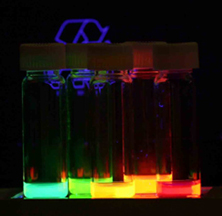New Insights into Plant Heat Sensing Mechanisms During Daylight

A groundbreaking study led by Professor Meng Chen at the University of California, Riverside, has unveiled new insights into how plants sense heat during daylight. The research, published in the journal Nature Communications on July 1, 2025, indicates that plants utilize a complex array of heat-sensing mechanisms, with sugars produced during sunlight playing a crucial yet previously overlooked role in their temperature response.
Traditionally, scholars have attributed heat sensing in plants primarily to proteins such as phytochrome B and early flowering 3 (ELF3), based on observations made during nighttime. "Our textbooks say that proteins like phytochrome B and ELF3 are the main thermosensors in plants," stated Professor Chen. "But those models are based on nighttime data. We wanted to know what's happening during the day, when light and temperature are both high because these are the conditions most plants actually experience."
To investigate this phenomenon, Chen and his team utilized Arabidopsis thaliana, a small flowering plant commonly used in genetics laboratories. The researchers exposed the seedlings to temperatures ranging from 12 to 27 degrees Celsius under varying light conditions and monitored the elongation of their hypocotyls, a classic indicator of growth response to warmth. Their findings revealed that while phytochrome B could detect heat under low light conditions, its thermosensing capability diminished significantly in bright light, which mimics midday sunlight.
Despite the reduced function of phytochrome B in bright conditions, the plants continued to respond to heat, indicating the presence of additional sensors. Further investigation revealed that Arabidopsis mutants lacking the thermosensing function of phytochrome B could only respond to warmth when grown in light. When these plants were cultivated in darkness, they did not exhibit increased height in response to warmth due to the absence of chloroplasts needed for photosynthesis. However, when their growth medium was supplemented with sugar, the temperature response was reinstated.
This pivotal discovery led the researchers to recognize that sugar is not merely an energy source for growth but also acts as a signaling molecule that informs the plant of elevated temperatures. Professor Chen explained, "That's when we realized sugar wasn't just fueling growth. It was acting like a signal, telling the plant that it's warm."
Further experiments demonstrated that higher temperatures triggered the breakdown of starch stored in leaves, releasing sucrose, which stabilized a protein known as PIF4, an essential regulator of growth. Without sucrose, PIF4 degraded rapidly, but its levels increased when sucrose was present, allowing it to become active when another sensor, ELF3, also responded to the heat.
The findings illuminate a sophisticated, multi-layered system whereby plants have evolved mechanisms to sense environmental changes through sugar-based signaling during daylight. As temperatures rise, starch converts into sugar, enabling critical growth proteins to function effectively. Professor Chen emphasized the implications of this research, noting that as climate change leads to extreme temperatures, understanding plant thermosensing could inform the breeding of crops capable of thriving under such stress.
This research not only reshapes our comprehension of thermosensing in plants but also underscores the intricate intelligence inherent in the plant kingdom. "In the blur of photosynthesis and starch reserves, there's a hidden intelligence — one that knows, sweetly and precisely, when it's time to stretch toward the sky," Professor Chen remarked, highlighting the complexity of plant responses to environmental stimuli.
The study, titled "A multisensor high-temperature signaling framework for triggering daytime thermomorphogenesis in Arabidopsis," authored by D. Fan et al., 2025, can be found in Nature Communications with the DOI: 10.1038/s41467-025-60498-7.
Advertisement
Tags
Advertisement





